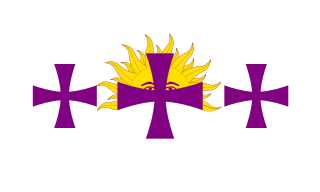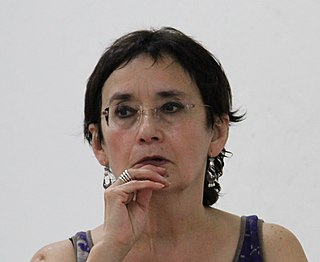
The legality of cannabis for medical and recreational use varies by country, in terms of its possession, distribution, and cultivation, and how it can be consumed and what medical conditions it can be used for. These policies in most countries are regulated by three United Nations treaties: the 1961 Single Convention on Narcotic Drugs, the 1971 Convention on Psychotropic Substances, and the 1988 Convention Against Illicit Traffic in Narcotic Drugs and Psychotropic Substances. Cannabis was reclassified in 2020 to a Schedule I-only drug under the Single Convention treaty, with the schedules from strictest to least being IV, I, II, and III. As a Schedule I drug under the treaty, countries can allow the medical use of cannabis but it is considered to be an addictive drug with a serious risk of abuse.

Hispanidad is a Spanish term describing a shared cultural, linguistic, or political identity among speakers of the Spanish language or members of the Hispanic diaspora. The term can have various, different implications and meanings depending on the regional, socio-political, or cultural context in which it is used.
Cannabis Party, or Partido Cannabico refers in Spain to different initiatives of political party and political campaigning centered around cannabis, hemp and drug policy proposals.
As of 2018, official statistics showed 201,993 Peruvian-born residents in Spain. Out of these, 129,344 were Spanish citizens and 72,649 had not yet acquired Spanish citizenship. As of 2019, the number had increased to 218,129.
Latindex is a bibliographical information system available for free consultation. Established as a network in 1997, the project is based on the cooperation of 17 national resource centers that operate in a coordinated scheme for the gathering and dissemination of relevant information and data on the Iberoamerican journals.

Omar Guerrero Orozco, Ph.D. in Public Administration by the National Autonomous University of Mexico, is full-time professor at the same institution and National Researcher Level III, which is the maximum level. He was director of the National Institute of Public Administration magazine from 1980 to 1982. He was member of the Social Sciences Committee of the National System of Researchers, collegial body in which he served as president (2003). He was recipient in 1979 of the “Public Administration Award” granted by the INAP. Guerrero is also member of the National Academy of Sciences since 1987 and of the Mexican Culture Seminar since 2006.

Gregorio Baró was an Argentine scientist. He was born in Santiago Temple, Córdoba and died in Buenos Aires.

Cannabis is legal in Uruguay, and is one of the most widely used drugs in the nation.
Vente Venezuela is a classical liberal political party in Venezuela headquartered in the city of Caracas. It has parliamentary representation in the National Assembly. Its registration as a political party has not been granted by the National Electoral Council.
Cannabis in Paraguay is illegal, but the nation is one of the world's largest producers of cannabis; possession of 10 grams or less was decriminalized in 1988. It is the second-largest cannabis producer in Latin America, following Mexico. Paraguay is the main source of cannabis for Brazil, Argentina, Uruguay, and Chile, and produced 5900 metric tons per year per a 2008 report.

Cannabis in Chile is illegal for all production and public consumption, though private at-home consumption, grow and selling is allowed for medical use. It is widely consumed, with the highest per-capita use in Latin America. In 2014 Chile began clinical trials on medical marijuana, and in 2015 a decriminalization bill successfully passed the lower house of the Chilean Congress.
Cannabis in Puerto Rico is illegal for recreational use. Legislation to ban cannabis was passed in 1932, and legislation to legalize medical use was passed in 2017. Although the medical use of cannabis is permitted, smoking it is prohibited.

Gonzalo Correal Urrego is a Colombian anthropologist, palaeontologist and archaeologist. He has been contributing to the knowledge of prehistoric Colombia for over forty years and has published in Spanish and English. Correal Urrego is considered one of the most important anthropologists of Colombia. He has collaborated with many other anthropologists and archaeologists, among others Thomas van der Hammen and Ana María Groot.

Carl Henrik Langebaek Rueda is a Colombian anthropologist, archaeologist and historian. He has been contributing on the knowledge of archaeological evidences, especially the Herrera Period and the Muisca. Langebaek was vice-chancellor for academic affairs at Universidad de los Andes and speaks Spanish and English.

Cannabis and hemp in Spain have a long and rich history. The plant has grown feral on the Iberian peninsula since prehistory and has been intensely cultivated, in particular for its fibres, throughout Spanish and Portuguese history.

Cannabis in Argentina is regulated by the Penal Code of Argentina, which prohibits its possession, cultivation, and supply, except for authorized medical purposes. Official statistics estimate that cannabis is used by 7.8% of Argentina's population.
Cannabis in Peru is not legal for recreational use, possession for own consumption is also decriminalized by the Criminal Code and medical cannabis was legalized in 2017.

Fernando Guillén Martínez (1925–1975) was a Colombian researcher, journalist, historian, sociologist and essayist.
The possession and use of cannabis is illegal in El Salvador for both recreational and medical purposes. The country is a signatory of the 1988 United Nations Convention Against Illicit Traffic in Narcotic Drugs and Psychotropic Substances, and has criminalized the production and distribution of the drug.

María Teresa Rojas Rabiela is an ethnologist, ethnohistorian, Emeritus National Researcher and Mexican academic, specializing in Chinampas of Mexico's Basin, history of agriculture, hydraulics, technology, and labor organization in Mesoamerica during pre-Columbian and colonial eras, as well as historical photography of Mexico's peasants and indigenous people. She is recognized as a pioneer in historical studies on earthquakes in Mexico. From 2018 to 2021, Rojas Rabiela was involved in the restoration of the section of the pre-Hispanic aqueduct of Tetzcotzinco, Texcoco, known as El caño quebrado.













